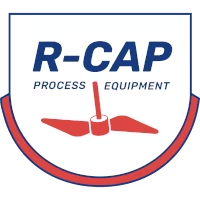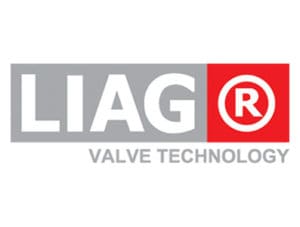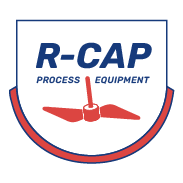Sanitary Valves
Sanitary Processing Valves
R-Cap supplies high-quality valves that are designed to meet industry standards for hygienic and sanitary processes. By ensuring airtight and sterile conditions, sanitary valves help prevent product contamination, maintain product quality, and promote overall consumer safety. Valves like these bthat are also easy to clean help promote the sanitary designs we offer.
Keep reading to learn about the different types of sanitary valves we offer, along with their intended uses.
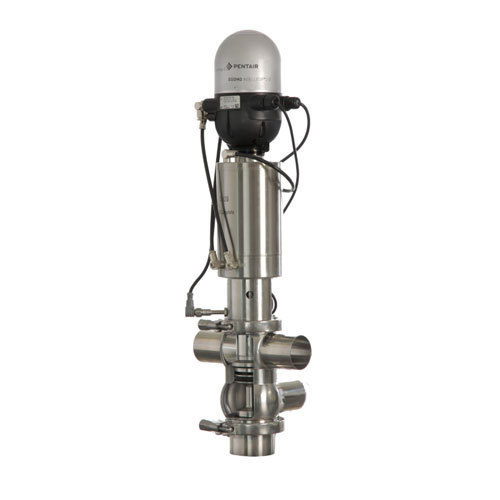
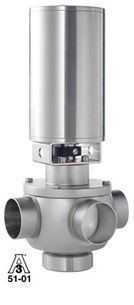
What Is a Sanitary Valve?
A sanitary valve is a type of valve that controls the flow of fluid and semi-fluid materials during production. “Sanitary” simply means that the valve contains no crevices or cavities that could capture particles during fluid transfer.
These valves help manufacturers in various industries create sterile environments to maintain health and safety standards. Most valves are made of durable stainless steel, which is the preferred material to ensure optimal hygienic conditions. That’s largely because it’s easy to clean and disinfect between uses.
Here’s a breakdown of the two main types of sanitary processing valves, including tips for when to use which one.
Hygienic Valves
Hygienic valves are designed to ensure cleanliness and prevent the accumulation of bacteria, debris, and other contaminants on the valve’s surface. They’re commonly used in industries where sanitation is crucial throughout the production process.
Aseptic Valves
Aseptic valves go a step further in preventing contamination by maintaining a sterile environment, particularly in industries where product purity is critical. Aseptic valves are used in processes that involve sensitive or sterile materials, like vaccines, injectable drugs, and biologic products.
When to Use Which Valve Type
Use a hygienic valve when maintaining cleanliness and preventing the accumulation of contaminants is essential—particularly in industries like food, beverage, and dairy processing since it’s considered a food-grade valve.
Opt for an aseptic valve when dealing with sensitive or sterile materials—like pharmaceuticals and biotechnology products—where maintaining a sterile environment and preventing any contact with the external environment is critical to product purity.
Common Industries That Use Sanitary Valves
The following industries use these particular process valves for daily operations:
- Food and beverage
- Dairy
- Brewing
- Pharmaceutical
- Medical
- Equipment sterilization
- Chemical
- Fragrance and cosmetics
The Different Types of Sanitary Valves
Butterfly Valve
A butterfly valve is a type of quarter-turn valve. It gets the name “butterfly” from a disk that’s attached to the rod. The valve opens, the fluid travels through the valve as the disk rotates, and the valve closes when the rod turns the disk a quarter turn. This valve is used for both on-off and modulated fluid control, including liquids and gasses.
It consists of a:
- Body
- Seal
- Disk
- Stem
Its benefits include being:
- Compact
- Lightweight
- User-friendly
- Energy-efficient
- Affordable
- Durable
- Corrosion-resistant
Mix Proof Valve
A mix proof valve is ideal for large-scale beverage and food production—like in the dairy industry—because it automates applications, which increases efficiency and reduces downtime. Two different fluids can flow through the valve simultaneously without risking cross-contamination because the two valve stems are controlled separately.
Common mix proof valve applications include:
- Liquid reception and transfer
- Liquid blending and mixing
- Raw and pasteurized product routing
- Tank and line cleaning
It offers the following benefits:
- Allows for continuous production
- Offers greater operator control
- Features leak detection capabilities
- Produces higher-quality products
- Easy to maintain and service
- Features simpler process piping
Single Seat Valve
A single seat valve features one seat and one plug—including a reversible plug option—and is used in oil and gas production as well as power generation. The line pressure flows upward, which produces a lower pressure range but optimal flow capacity. Single seat valves feature secure shut-off capabilities, making them safe for everyday use.
A double seat valve is a top and bottom guided valve that features two seats and two plugs. The line pressure flows upward in one plug and downward in the other plug, which levels the force of the fluid traveling through the valve. This results in a faster flow response, allowing the valve to be used for applications with higher pressure because the pressure is balanced more effectively.
Arc Valve
An ARC (automatic recirculation) valve is a type of multi-functional valve featuring three-way capabilities. It pushes a set minimum flow through a centrifugal pump and is ideal for pasty media and low-germ processes.
Its primary benefits include:
- A modular design
- Automatic bypass operation
- A non-return function
- Pressure modulation
- Self-cleaning capabilities
- Customized pressure control
Why Use Pentair-Sudmo Valves?
Pentair-Sudmo valves are easy to maintain and enhance operational performance by featuring greater safety, efficiency, and reliability. They also feature optimal cleaning functions and allow for fewer interruptions and less downtime.
Why Use Liag Valves?
Designed to transfer viscous fluids and fluids containing solid particles, Liag valves meet the demands of various process engineering applications. These valves feature a simple design, are safe to operate, and are extremely hygienic. With fewer components than alternative options, Liag valves require minimal maintenance and repairs. They also don’t lose pressure during operation.
R-Cap Can Handle All Your Sanitary Valve Needs
As a master distributor of Pentair-Sudmo and Liag valves, we only source the best hygienic and aseptic valves on the market. All our valves are made of durable stainless steel and can be customized for applications in any industry. Don’t wait to secure the solution you need. Browse our collection of sanitary valves today to find the one that’s right for you.
